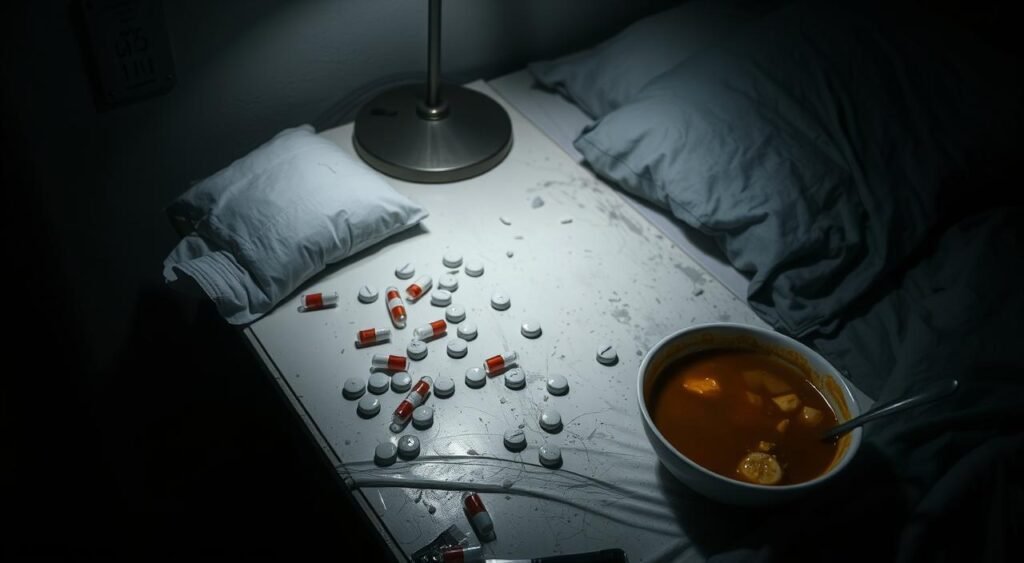After wisdom teeth extraction, many people wonder about the worst day of pain after wisdom tooth extraction and how to get through it. Recovery times differ from one person to another, but understanding when to expect the most discomfort can help you prepare. Typically, the worst pain hits within 24 to 48 hours after surgery, making it essential to manage this period carefully for a smoother recovery.
During the first few days, pain and discomfort are at their peak. This is when you might experience swelling, bruising, sensitivity, and varying levels of pain, from a dull ache to sharp, throbbing sensations. By knowing when the worst day of pain after wisdom tooth extraction is likely to occur, you can take proactive steps to minimize discomfort and speed up healing.
- Understanding Wisdom Tooth Extraction and Recovery Timeline
- Typical Pain Patterns Following Wisdom Teeth Removal
- Worst Day of Pain After Wisdom Tooth Extraction
- How to Speed Up Wisdom Teeth Recovery
- Strategies for Managing Swelling and Complications
- Post-Extraction Nutrition: Best Foods for Healing
- Conclusion
Understanding Wisdom Tooth Extraction and Recovery Timeline
Wisdom tooth extraction is a common procedure done as an outpatient surgery. You might feel some mild to moderate nausea and pain in your mouth and jaw on the day of the surgery. It’s best to rest at home for the first two days and avoid strenuous activities.
The Outpatient Procedure and Immediate Aftermath
Recovery from wisdom teeth removal takes about 1 to 2 weeks. Most people can go back to their normal life in 5-6 days. In the first two days, you might feel some nausea, pain, and minor bleeding. Some people might notice light bruising and swelling around the cheeks and mouth.
What to Expect 72 Hours After Wisdom Tooth Extraction
Swelling gets worse on days 3-4. You might find it hard to open your mouth fully because of soreness. By days 5-7, swelling and soreness will be minimal. You might feel ready to start doing normal things, including going back to work the next day.
Progression of Healing: Day by Day Recovery
Recovery times can vary from person to person. Some people might start feeling better sooner than others. After the surgery, risks like infection, dry socket, sinus problems, and nerve damage are possible but rare. These risks are lower if you follow the post-op instructions carefully.
Typical Pain Patterns Following Wisdom Teeth Removal
Recovery after wisdom teeth removal can feel like a rollercoaster, with ups and downs in pain. Knowing what pain you might feel helps manage your expectations and find relief.
Throbbing Pain 5 Days After, and What It Means
Many people feel throbbing pain around the 5-day mark after removing wisdom teeth. This pain is normal and comes from the body’s healing process. It shows your body is working to heal the surgery site.
Persisting Discomfort: 4 and 6 Days Post-Removal
Some people may still feel pain up to 6 days after the surgery. This varies because everyone heals differently. Things like age, health, and how hard the surgery was can affect pain levels.
While the sharp pain usually goes away by days 3-4, a dull ache might last longer. Remember, everyone heals at their own pace. Following your dentist’s advice on pain management helps you heal faster. With care and patience, you’ll be back to normal soon.

Worst Day of Pain After Wisdom Tooth Extraction
The first 24 hours after removing your wisdom teeth are usually the toughest. As the anesthesia fades, you might feel a lot more pain and swelling. The painkillers you got might not work as well yet, leaving you to deal with the pain alone.
By day two, the pain and swelling hit their peak. This happens because your body is fighting off inflammation after the surgery. Your dentist will tell you to use over-the-counter pain relievers and cold packs to ease the pain.
The pain might last for a few days, but it’s just part of healing. If the pain is too much or you have other issues like too much bleeding, fever, or trouble swallowing, call your dentist right away. They might change your pain medicine or do more to help you heal.
| Day After Wisdom Teeth Removal | Typical Pain and Swelling Levels |
|---|---|
| 1 | Pain and swelling at their peak |
| 2-3 | Continued high levels of pain and swelling |
| 4-5 | Gradual decrease in pain and swelling |
| 6+ | Significant reduction in pain and swelling |
Everyone heals at their own pace, so be patient and listen to your dentist. With the right care and pain relief, you’ll get through the recovery smoothly.
How to Speed Up Wisdom Teeth Recovery
Recovering from wisdom teeth extraction can be tough, but you can make it faster. It’s important to follow your dentist’s advice for a quick recovery.
Post-Surgical Care Instructions
Your dentist will tell you to rest for at least 3 days after the surgery. This lets your body heal. Important steps include:
- Using ice packs to lessen swelling and pain
- Keeping your head up to reduce bleeding and pain
- Drinking lots of water to stay hydrated
- Avoiding alcohol, smoking, and tobacco
Home Remedies and Pain Management Techniques
Along with your dentist’s advice, using home remedies and pain relief methods can help you heal faster. Useful tips are:
- Gently massaging your jaw to improve blood flow and healing
- Rinsing your mouth with warm salt water to prevent dry socket
- Taking pain relievers as directed to ease discomfort
- Getting enough rest to let your body heal
By sticking to these steps and using these home remedies, you can speed up your wisdom teeth recovery. This way, you can get back to your usual activities sooner.
Strategies for Managing Swelling and Complications
Removing wisdom teeth is a common surgery, but it comes with challenges. Swelling is a normal reaction to the surgery, especially in the first few days. To manage swelling and avoid complications, there are steps you can take.
Start by using ice packs on the area for 30 minutes at a time. This can lessen swelling and pain. Keeping your head raised also helps by preventing fluid from gathering at the surgery site. A warm salt water rinse can ease discomfort and reduce swelling.
Good oral hygiene is key to avoid infection, which could lead to dry socket or sinus issues. Always follow your dentist’s advice, including the use of mouth rinses and gentle brushing.

About 30% of wisdom teeth removals with an impacted tooth can lead to dry socket. This happens when the blood clot at the extraction site gets dislodged, causing a lot of pain. If you have severe pain, bleeding, fever, or other unusual symptoms, call your dentist right away.
By sticking to your dentist’s post-op care and using these tips, you can control swelling and lower the chance of complications during your wisdom teeth removal recovery. Healing can take up to two weeks, so be patient and focus on your oral health.
| Complication | Incidence Rate | Symptoms | Management |
|---|---|---|---|
| Dry Socket | Up to 30% | Intense pain, especially 2-3 days post-extraction | Contact dentist, may require medicated dressing |
| Sinus Communication | Less than 1% | Nasal congestion, fluid leakage from nose | Contact dentist, may require surgical repair |
| Infection | Less than 5% | Pain, swelling, discharge, fever | Contact dentist, may require antibiotics |
Even though complications can happen, they are not common. By following your dentist’s advice and taking steps to manage swelling and keep your mouth clean, you can make your after wisdom teeth removal recovery smoother.
Post-Extraction Nutrition: Best Foods for Healing
After your wisdom tooth extraction, the foods you eat can really help your healing. In the first few days, choose soft foods that are easy to chew. This helps avoid irritating the surgery area or straining your jaw.
Soft Diet Ideas for Post Wisdom Teeth Removal
- Smoothies – Blend together fruits, vegetables, and yogurt for a nutrient-dense, cooling treat.
- Yogurt – Greek yogurt is an excellent source of protein to support healing.
- Soup – Broth-based soups, such as chicken noodle or tomato, provide hydration and nourishment.
- Applesauce – This smooth, sweet puree is gentle on your mouth and packed with vitamins.
- Mashed potatoes – Creamy mashed potatoes offer essential calories and nutrients.
- Scrambled eggs – High in protein, vitamins, and minerals to aid recovery.
- Avocado – The healthy fats and creamy texture make avocado a soothing choice.
- Hummus – This protein-rich spread is easy to consume and gentle on your mouth.
- Cottage cheese – A soft, protein-packed dairy option to support healing.
- Instant oatmeal – The smooth, creamy texture is ideal for post-extraction consumption.
Foods to Avoid to Prevent Aggravating Surgical Sites
Avoid certain foods that could irritate the extraction sites and slow down your recovery. Stay away from hard, crunchy, or chewy items. Also, avoid spicy and acidic foods until your dentist says it’s okay to eat them again.
Conclusion
Getting your wisdom teeth removed can be tough, but you can make it easier with the right steps. Knowing how long it takes to heal helps you manage any pain or issues. This way, you can handle the recovery better.
Following your dentist’s advice is crucial. This means taking your pain meds, keeping your mouth clean, and eating soft foods. Also, using ice packs, rinsing with saltwater, and avoiding things that might disturb the healing can help you get better faster.
The first few days might be tough, but with time, care, and sticking to the recovery plan, you’ll get through it. Always talk to your dentist if you have any worries or problems. This helps make sure you heal well.
FAQ – Wisdom Tooth Extraction Recovery
What is the worst day of pain after wisdom tooth extraction?
The first 24 hours after removing wisdom teeth is usually the toughest. You’ll feel more pain as the anesthesia wears off. The swelling and discomfort can last for a few days.
How long do wisdom teeth take to heal?
Healing time varies, but it can take 1 to 2 weeks. Most people feel normal again in 5-6 days.
What can I expect after wisdom tooth extraction?
Expect some discomfort, jaw stiffness, swelling, and minor bleeding. The pain peaks a day or two after surgery, which is normal.
Can I go to work the next day after wisdom tooth extraction?
Stay home for the first two days to rest and avoid strenuous activities. Swelling peaks during days 3-4, then decreases. By days 5-7, most swelling and soreness should be gone.
What is the timeline for wisdom teeth recovery?
On surgery day, you might feel some nausea and mild to moderate mouth and jaw pain. Pain and swelling increase, and discomfort lasts a few days. By days 5-7, most swelling and soreness should lessen.
Why do I still have throbbing pain 5 days after wisdom teeth removal?
The pain usually peaks a day or two after surgery. It changes to general soreness by days 3-4. Some people may still feel discomfort for up to 6 days due to healing differences.
Why am I still in pain 4 and 6 days after wisdom teeth removal?
The intense pain turns into general soreness by days 3-4. Yet, some may still feel discomfort for up to 6 days due to healing differences.
How can I speed up wisdom teeth recovery?
Follow your dentist’s advice, like resting for 3 days, using ice packs, and staying hydrated. Avoid alcohol, smoking, and tobacco. Warm salt water rinses and gentle jaw massages can also help.
What is dry socket, and how can I avoid it?
Proper pain management with your dentist’s guidance is key. Keeping your mouth clean to prevent infection is also vital. This helps avoid dry socket or sinus issues.
What foods should I eat after wisdom teeth removal?
Eat soft foods like smoothies, yogurt, soup, and applesauce. These foods are easy to chew and won’t harm your healing. Avoid straws to prevent dislodging the blood clot.
What foods should I avoid after wisdom teeth removal?
Stay away from hard, crunchy, or sticky foods, and spicy or acidic ones until your dentist says it’s okay.








